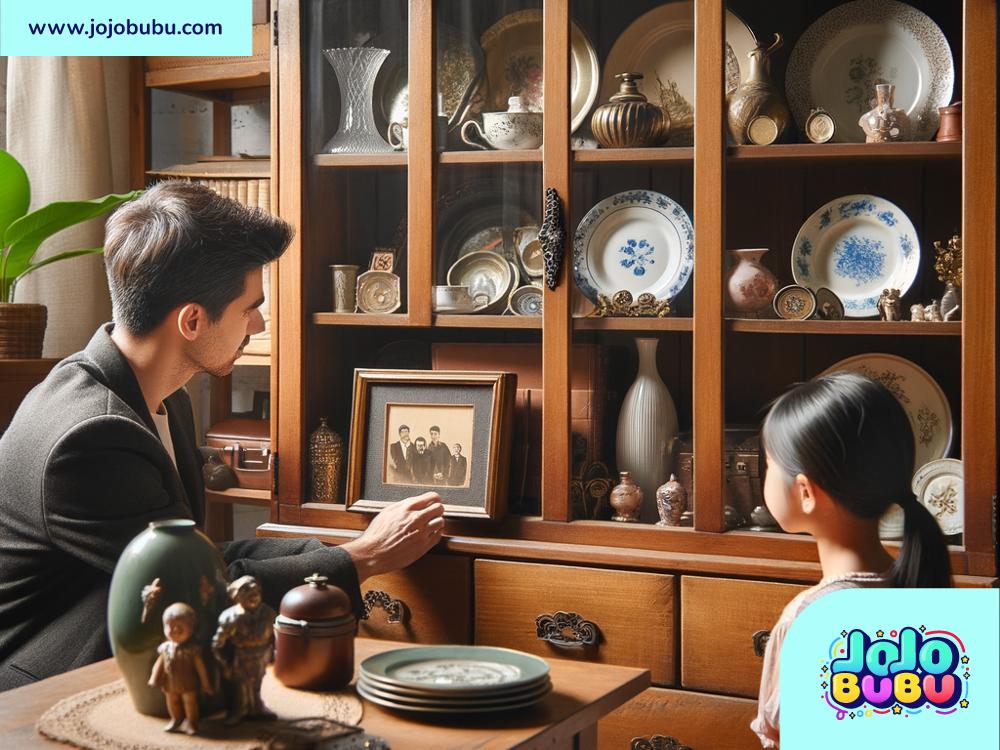Managing Inherited Family Heirlooms: A Simple Guide
Family heirlooms are treasures passed down through generations — items like grandma's silver tea set, grandpa’s watch, or a handmade quilt stitched with love. These objects often carry deep emotional value, connecting us to our family history. However, inheriting heirlooms can also be overwhelming. Do you keep every piece? Where do you store them? What happens if relatives disagree over who inherits what?
If you’ve recently inherited family heirlooms and aren’t sure how to handle them, here’s a simple guide to help you manage these precious items responsibly and with care.
Step 1: Identify What You’ve Inherited
When you first receive inherited items, start by sorting through them. Make an inventory and note anything that stands out:
- Emotional Value: Does this item hold sentimental meaning? For example, a framed family photo might be priceless in preserving history.
- Monetary Value: Some heirlooms, like jewelry or antiques, might be worth a lot of money. If you’re unsure, consult an appraiser to estimate their value.
- Practical Use: Is this heirloom something you can use daily, like a vintage table, or is it purely decorative?
Knowing what you have will give clarity moving forward.
Step 2: Organize and Prioritize
Once you’ve identified what you’ve inherited, the next step is to prioritize which items mean the most to you. It’s okay to admit some things are more meaningful than others; you don’t have to keep every single item just because it’s been passed to you. Here’s how you can think through organizing:
-
Keep the Favorites: If the heirloom is something dear to you, hold on to it. For example, your grandmother’s wedding ring or a family Bible might be non-negotiable for keeping.
-
Repurpose Items: Some heirlooms might seem outdated, but that doesn’t mean you should throw them away. A brooch could turn into a necklace or an old sewing machine could be used decoratively in your home.
-
Pass on What You Don’t Need: You don’t have to keep heirlooms just for tradition’s sake. If the item doesn’t speak to you, think about passing it to another family member or donating it to a museum dedicated to preserving history.
Step 3: Store Safely
Family heirlooms are often fragile, so it’s essential to store them properly to protect their longevity. Here are some quick tips for storing valuable heirlooms:
-
Documents and Photos: Place old letters, legal papers, and photographs in acid-free folders and keep them in a dry, dark spot, away from sunlight and moisture.
-
Jewelry: Store jewelry in a padded box or cloth to prevent scratching. For particularly valuable pieces, consider a safe deposit box for extra security.
-
Furniture or Large Items: Keep wooden items like furniture out of humid environments to prevent cracks and wear. Consistent cleaning with proper products can also protect heirlooms like tables or chairs.
-
Art and Antiques: Valuable paintings or fragile antiques might need professional framing or climate-controlled storage.
Once your heirlooms are safely stored, you'll have peace of mind knowing they’re preserved for the future.
Step 4: Communicate with Family
Inherited heirlooms can sometimes cause tension in families, especially when siblings or relatives have to decide who ends up with what. Handling this aspect with open communication can prevent unnecessary conflicts.
-
Start Early Conversations: If possible, discuss heirlooms before they’re officially passed down. Having an honest discussion with family members about who wants what item can help make decisions easier.
-
Use a Fair System: If multiple family members want the same heirloom, set up a fair system for resolving disputes. Family meetings, drawing names, or rotating who gets the next choice can reduce disagreements.
-
Share Items: If no one can agree, consider sharing the heirloom. For example, a quilt might rotate between siblings every few years, or digital copies of old photos could be distributed to everyone.
Remember, it’s not the object itself that typically matters — it’s the story and memories tied to it. Focus on preserving family relationships while sorting through the legacy of heirlooms.
Step 5: Honor the Stories
One of the most valuable aspects of heirlooms isn’t the object itself, but the history it carries. Take time to document the stories behind the items you’ve received. For example:
- Write down what you know about your grandfather’s pocket watch or your aunt’s china set. Who originally owned it? What does it represent?
- Make notes, take photos, or record videos to share these stories with the next generation.
By honoring the past through storytelling, you keep family traditions alive in a meaningful way.
Step 6: Let Go When Necessary
Sometimes it’s hard to admit, but it’s okay to part with heirlooms if you cannot care for them or if they don’t resonate with you. Holding onto items out of guilt or obligation doesn’t honor their legacy. Instead of letting them collect dust, consider thoughtful options like donating to a local historical society or selling the item to someone who’ll appreciate it.
Final Thoughts
Managing inherited family heirlooms is more than just deciding what to keep and what to let go; it’s about honoring the memories and preserving the connection to your family’s past. With the right plan — identifying, organizing, protecting, communicating, and letting go when needed — you can ensure these items continue to hold meaning for generations to come. Take your time, show gratitude, and remember: what truly matters is the love and stories behind the heirlooms, not just the objects themselves.

